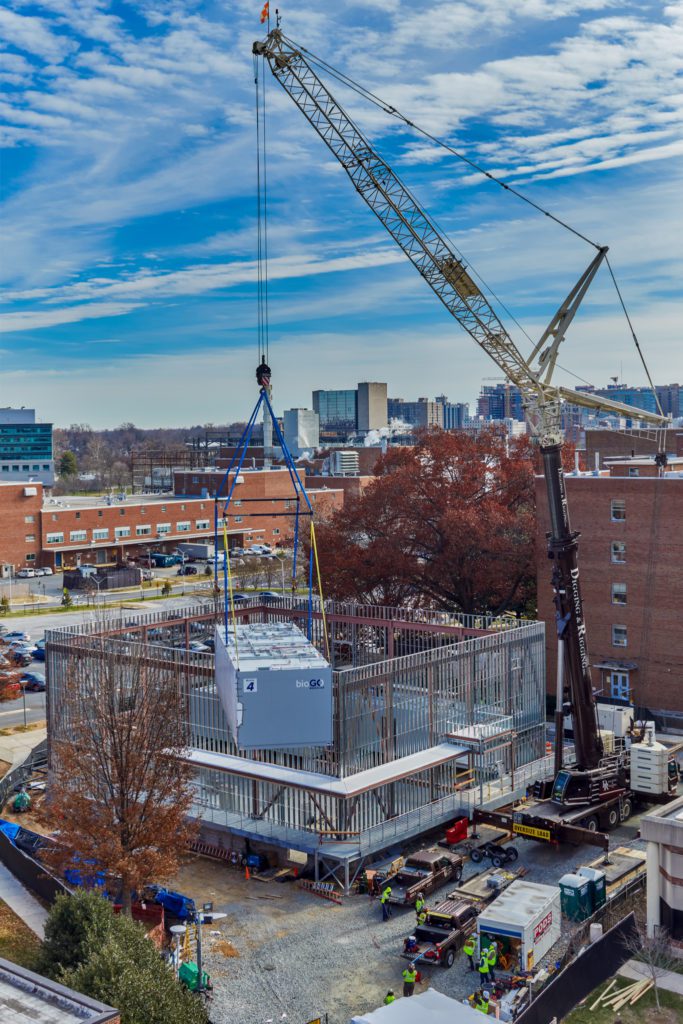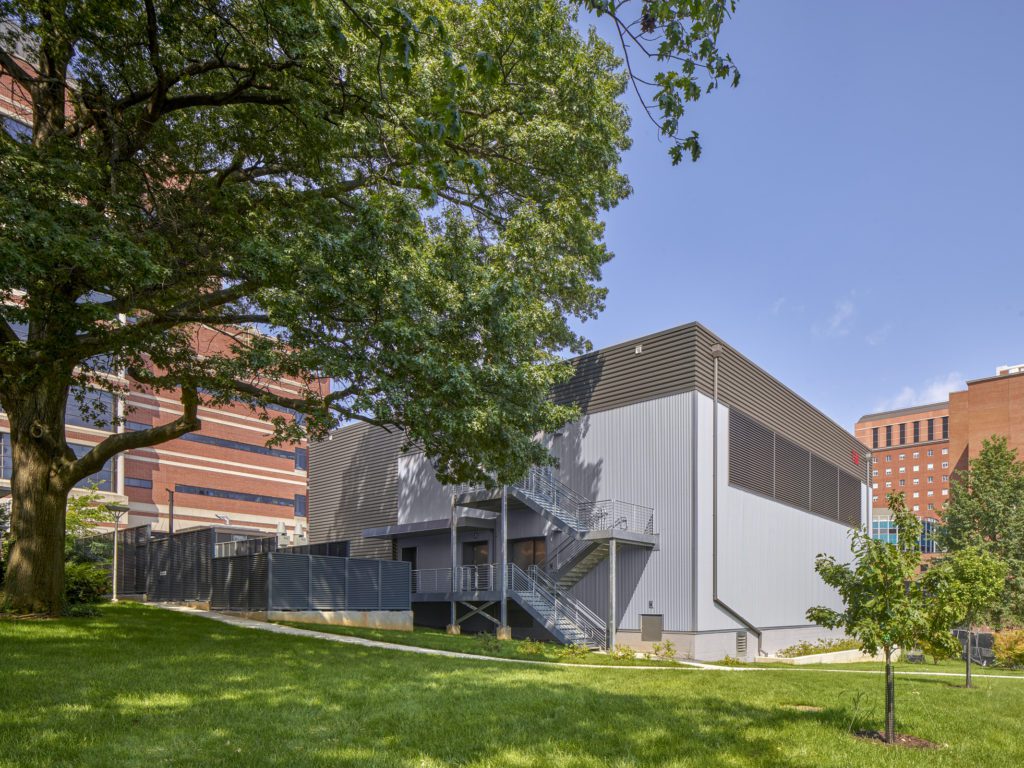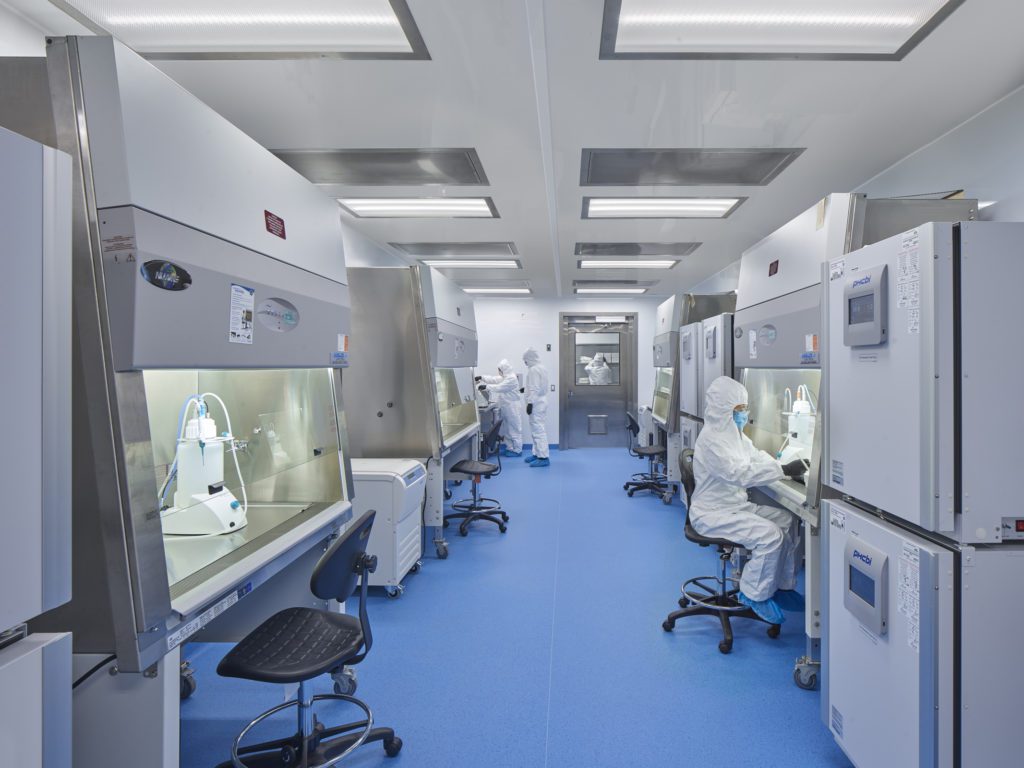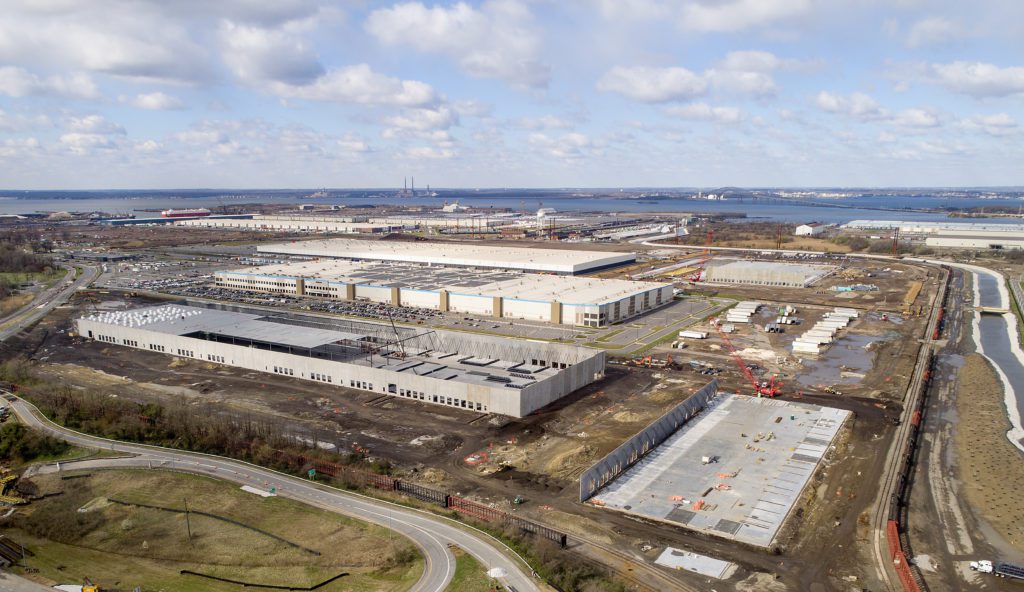Made in Maryland
Demand rises for new manufacturing facilities
To satisfy a client’s need for a mere 6,000 square feet of new, manufacturing space, the team lead by DPR Construction had to successfully execute an extraordinarily complex, first-of-its-kind construction project.

The National Cancer Institute’s new T30 Cell Processing Facility on the National Institutes of Health (NIH) campus in Bethesda would become the country’s first large-scale cGMP (current Good Manufacturing Practices) facility that was fully prefabricated and assembled from multiple modules. In addition to providing essential manufacturing space for cell therapies, the unprecedented project would help NIH and its construction partners gain capabilities on modular construction in order to meet high-speed needs in the future.
“The biggest challenge was that we were essentially managing two projects simultaneously – the fabrication of the modules at the Germfree facility in Florida and the construction of the exterior structure in Bethesda,” said Ignacio Diaz, Senior Project Manager at DPR Construction. “We had to coordinate every detail of those parallel projects so that ultimately everything would fit together perfectly when we assembled the facility on site.”
Increased research and investment in life sciences has heightened demand for new, advanced manufacturing facilities in Maryland. At the same time, growing adoption of renewable energy technologies and early signs of reshoring projects are further driving up the need for new manufacturing facilities. That presents attractive opportunities for the construction industry but also the challenges of delivering sophisticated and sometimes groundbreaking projects, maintaining stringent quality standards, meeting intense speed-to-market needs, and overcoming supply chain obstacles.
Prefabbing a factory
“Oftentimes, people think of modular as a plug-and-play solution. It’s not,” said Abhishek Dhawan, Life Sciences Project Executive at DPR.
Even with meticulous project design, the DPR team needed to spend several days each month in Florida during the module fabrication to ensure that structures, building systems, manufacturing infrastructure and other elements would come together seamlessly, function perfectly and meet NIH’s precise needs.
“Then it takes a lot of sequencing and steps to assemble the building,” Dhawan said.

The T30 Cell Processing Facility was comprised of 10 oversized, prefabricated modules that housed cell manufacturing suites, cell processing suites, cleanroom lab space, cold storage space and offices. Although each module measured an average of 11 by 40 feet and weighed between 40,000 and 50,000 pounds apiece, they were not perfect, uniform rectangles and crews couldn’t simply slide modules into place next to each other without damaging gasketing that was designed to seal the modules together.
Consequently, DPR embarked on another first and created a 4D scheduling plan to detail every step, day-by-day involved in “putting this complex jigsaw together,” Diaz said.
That process included taking the top off the structural steel shell built on the NIH campus, bracing the exterior walls then completing a carefully choreographed sequence of rigging and hoisting the modules (sometimes up to 40 feet in the air) and placing them inside the structure. A crew of 10 to 15 carpenters worked in tandem with the riggers to build platforms for ductwork as the modules were installed “and then there was the army of people needed to install piping,” Diaz said. “There is a lot of conduit that needs to get terminated, a lot of wire that needs to get pulled, there is QA and QC that needs to happen throughout all of that so the work has to follow a cadence to be successful.”
New investors in manufacturing
While the T30 Cell Processing Facility project was a unique endeavor, construction of advanced manufacturing facilities – especially ones serving the life sciences industry – is becoming increasingly common in Maryland.

“The bulk of manufacturing projects that we have seen lately are in cell or gene therapy. But the sector is evolving. It’s not just pharma or end-user companies building them. There has been a huge change in both government and private equity funding coming to life sciences,” Dhawan said. “The Mid-Atlantic region is one of the fastest growing regions when it comes to these projects. The next three to five years are looking pretty strong for this sector.”
“One of the interesting trends in this sector is we are seeing a lot more small-scale manufacturing requirements – essentially lab bench to small-scale manufacturing all in one facility,” said Clare Archer, Vice President of Gilbane Building Company.
That trend both supports life sciences researchers and startup companies, as well as owners of underperforming office buildings.
“Owners in the commercial office market have seen an opportunity in life sciences and are repositioning their assets for life sciences companies who are in the post-incubator but pre-large-scale production stage. That’s been a really interesting new space and we are seeing it take off now,” said Archer, adding that Gilbane is currently assessing a handful of such projects.
Reshoring and renewables
Two other trends are also driving demand for new manufacturing space in Maryland.

First, pandemic-related supply chain challenges have convinced some manufacturers to open more operations in the United States. In March, United Safety Technology announced a $350 million plan to open a 735,000-square-foot medical-grade glove manufacturing facility at Tradepoint Atlantic.
“New, advanced technologies are making it easier for American manufacturers to compete [against offshore plants],” said Mike Galiazzo, President of the Regional Manufacturing Institute of Maryland. “United Safety Technology developed their automation systems in Malaysia and they are bringing them to the United States to set up their facility at Tradepoint.”
Second, the rise in renewable energy generation is expected to trigger multiple manufacturing projects in Maryland in the coming years. In December, the Public Service Commission approved increases in the total wind power that U.S. Wind and Orsted can develop off Maryland’s coast. That decision also requires the developers to create three, major manufacturing facilities in the state:
- A monopile facility to fabricate the subsea foundations for the wind turbines,
- A tower facility to create the steel towers that will hold the turbine blades, and
- An array cable facility that will manufacture the large, highly engineered power lines that will stretch between the turbines and link them to an offshore substation.
Gilbane has already landed the design-build contract for the Hellenic Cables Manufacturing Facility – a 580,000-square-foot building on a 35-acre site at Tradepoint Atlantic. However, those three named projects are only a portion of the upcoming manufacturing projects related to renewable energy, according to Archer.
“Another trend we are seeing in the Mid-Atlantic and in most of Gilbane’s national footprint is an increase in industrial projects related to renewables, whether they are direct EV factories or wind turbine parts, or industrial that is driven by that industry’s Tier 1 suppliers, such as battery production,” she said. “That is creating a real uptick in the market and we don’t anticipate that slowing at all… Renewable energy is really impacting the construction market right now. I have been in this industry for a long time and I am seeing fresh opportunities that we haven’t seen before. It’s exciting.”